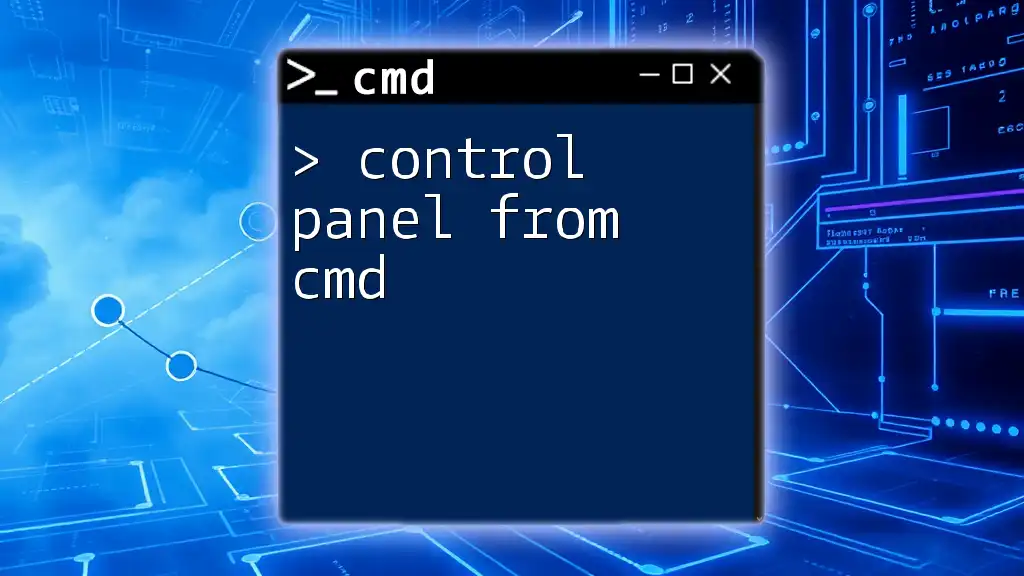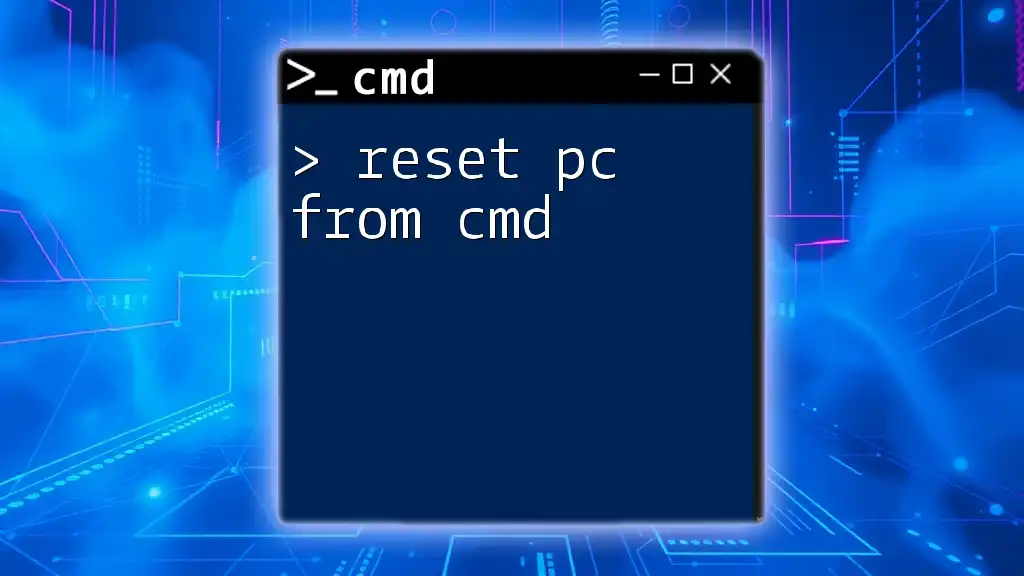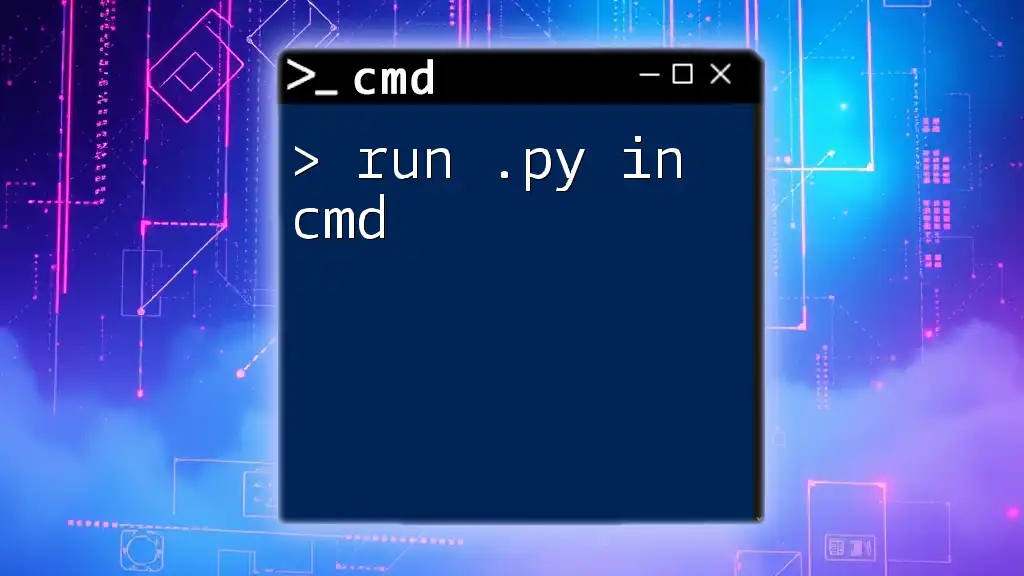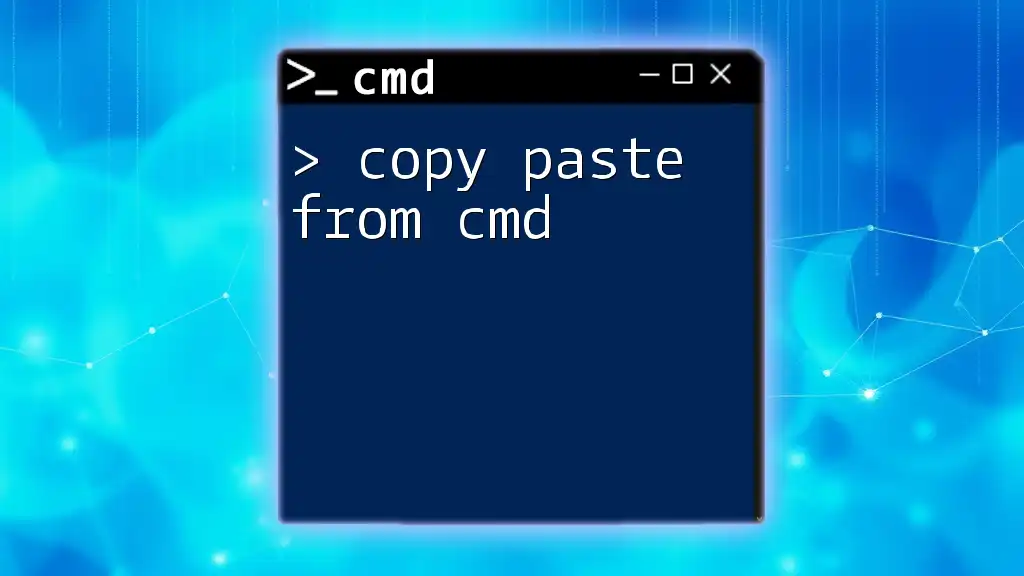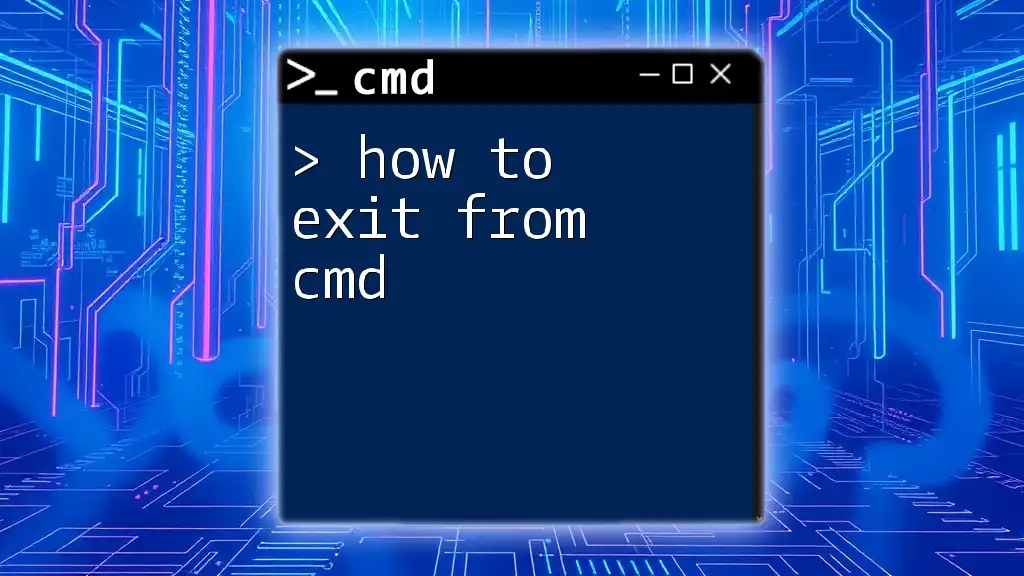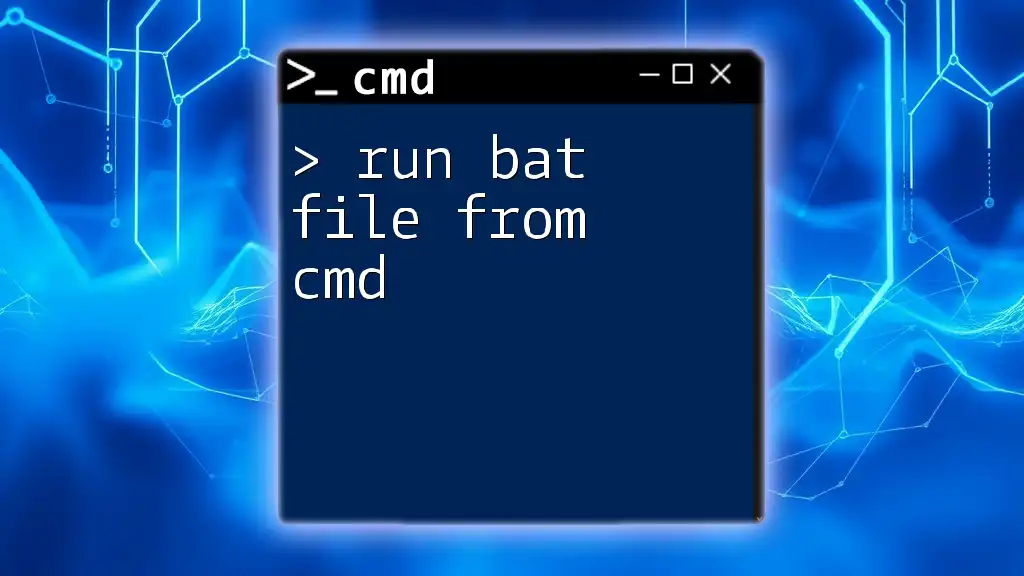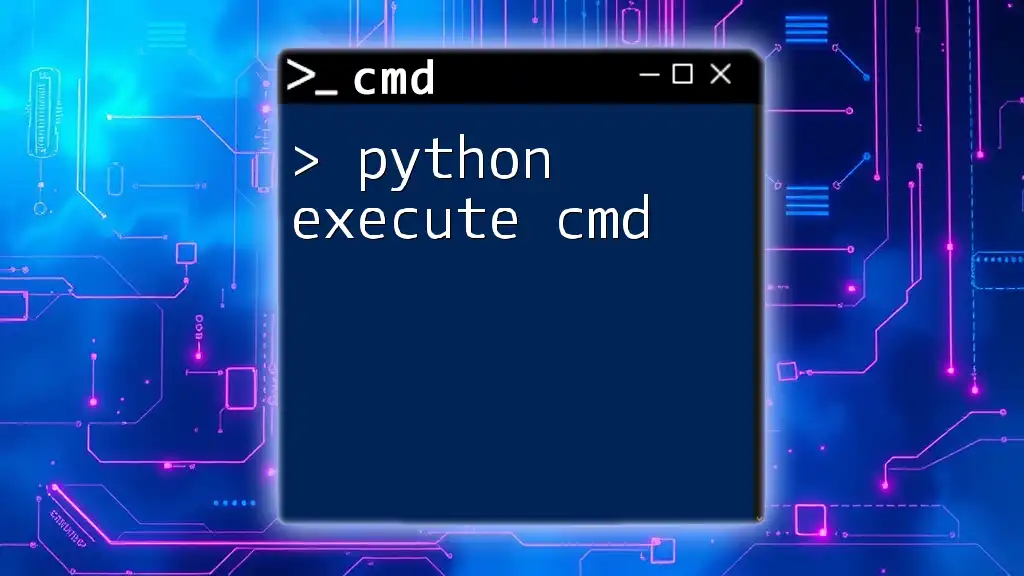To run a .exe file from the command prompt, simply navigate to the directory containing the executable and type its name followed by the `.exe` extension.
cd C:\path\to\directory
example.exe
What is an Executable (.exe) File?
An executable file, commonly known as an .exe file, is a program designed to be executed by the operating system. These files contain a series of instructions that the computer follows to perform specific tasks.
Common uses of .exe files include software installation, where they install applications on your system, and running utilities that perform functions like system diagnostics, maintenance, and file management. Understanding how to run .exe files is essential, especially for users who want to maximize their efficiency and control over their Windows environment.
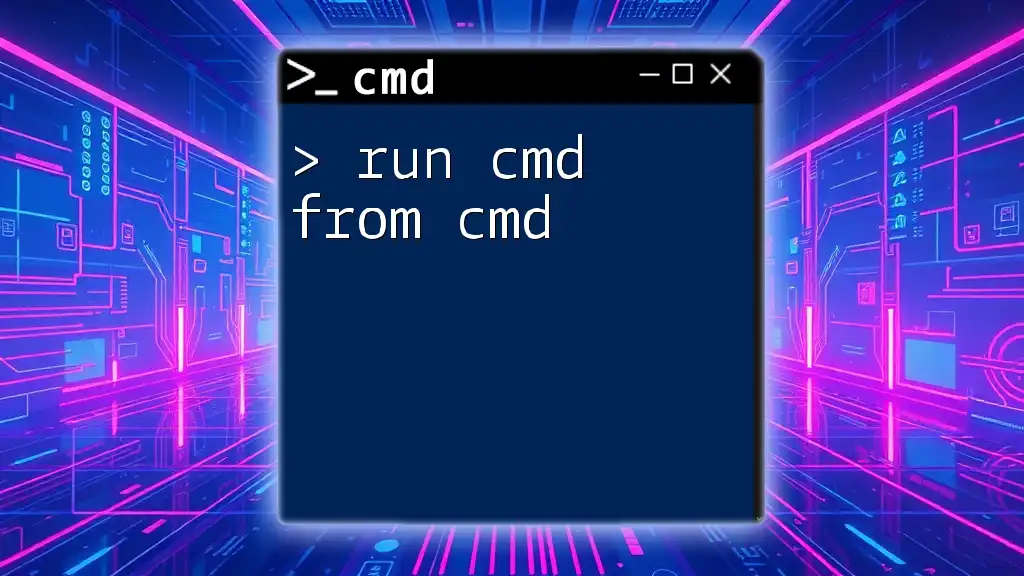
Understanding CMD (Command Prompt)
What is CMD?
CMD, or Command Prompt, is a command-line interpreter that allows users to execute commands to perform specific tasks on Windows operating systems. Using CMD, you can access system functions and execute programs efficiently without the graphical interface.
Why Use CMD?
Using CMD to run .exe files has several advantages. It allows for automation, enabling users to run scripts for repetitive tasks quickly. Furthermore, CMD facilitates batch processing, meaning you can queue multiple commands to execute in sequence. Lastly, CMD is an excellent troubleshooting tool, providing insights into system operations that may not be available in graphical user interfaces.

How to Run an .exe File from CMD
Opening Command Prompt
To get started, you need to open the Command Prompt. Here’s how:
- Press `Windows + R` to open the Run dialog.
- Type `cmd` and press `Enter`, or search for "Command Prompt" in the Start Menu and launch it.
Navigating to the Directory
Understanding Directories
In CMD, directories refer to the folders on your system that organize files. To run an executable, you often need to navigate to the directory where the .exe file is located.
Using the `cd` Command
The `cd` (change directory) command allows you to move between folders in CMD. For example, to navigate to a directory containing your desired executable, you would write:
cd C:\Path\To\Your\Directory
Replace `C:\Path\To\Your\Directory` with the actual path. Knowing the correct path is crucial for successful execution.
Executing the .exe File
Running the Executable
Once you're in the correct directory, you can run the executable using the following basic syntax:
start yourprogram.exe
Ensure you replace `yourprogram.exe` with the actual name of your executable file. If the path has spaces, enclose the path in quotation marks.
Example of Running an Executable
For instance, if you have a program named `YourApp.exe` located in `C:\Program Files\YourApp`, your commands would look like this:
cd C:\Program Files\YourApp
start YourApp.exe
This command navigates to the program's directory and then runs the executable.
Alternative Methods to Execute .exe from CMD
Direct Execution
An alternative method is to run the .exe file directly from its path without changing directories. The command would look like this:
C:\Program Files\YourApp\YourApp.exe
Using this method can save time, especially if you know the exact location of the file.
Using Environment Variables
Setting and using environment variables can ease the process of running executables. You can create a variable that points to the directory of your .exe file, allowing you to execute it without navigating through directories every time. This method is especially useful for frequently used applications.
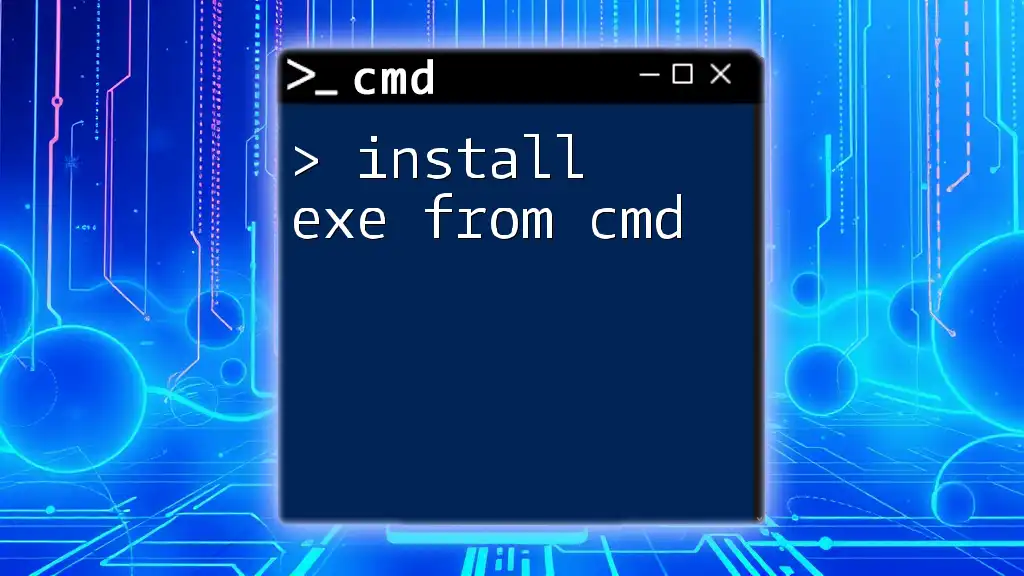
Common Issues When Running .exe Files
Error Messages
While using CMD, you might encounter various error messages when attempting to run .exe files. Here are some common ones:
- "File not found": This usually occurs when the directory path is incorrect or the .exe file doesn’t exist in that location.
- "Access denied": This error often indicates that you need administrative privileges to execute the program.
Troubleshooting Tips
Check File Path
Ensure that the file path to the .exe is correct. You can also verify the existence of the file using File Explorer.
Run as Administrator
Some .exe files require administrator permissions to run correctly. To launch CMD with elevated privileges, search for "Command Prompt" in the Start Menu, right-click it, and choose "Run as administrator." This will ensure that you have the necessary access rights.
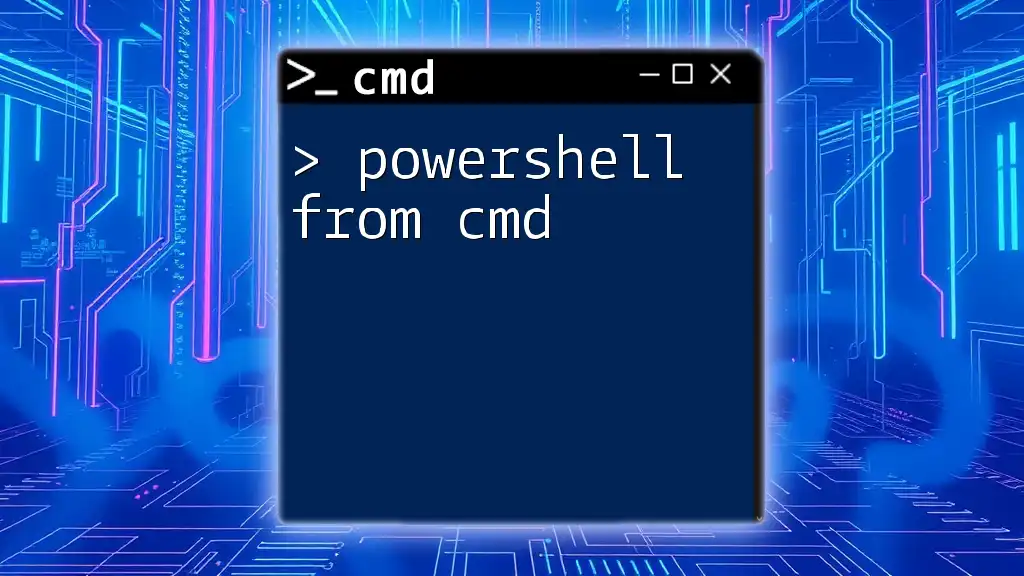
Advanced CMD Executable Usage
Running .exe Files with Arguments
What are Arguments?
Command-line arguments allow you to pass additional parameters to executables, modifying their behavior. For instance, they might instruct the program to perform a specific function or to open a particular file.
Example Usage
When running an executable with arguments, the command would look like this:
start YourApp.exe -arg1 -arg2
Replace `-arg1` and `-arg2` with the specific arguments your program requires. This flexibility helps maximize the functionality of your applications.
Batch Files for Automation
Creating a Batch File
A batch file is a script that can automate tasks through CMD. To create one that runs .exe files, follow these steps:
- Open Notepad (or any text editor).
- Write the following script:
@echo off
cd C:\Path\To\YourApp
start YourApp.exe
- Save the file with a `.bat` extension (e.g., `runYourApp.bat`).
- Double-click the batch file to run the commands within it automatically.
Using batch files is an effective way to save time and ensure consistent execution of tasks that you need to perform regularly.
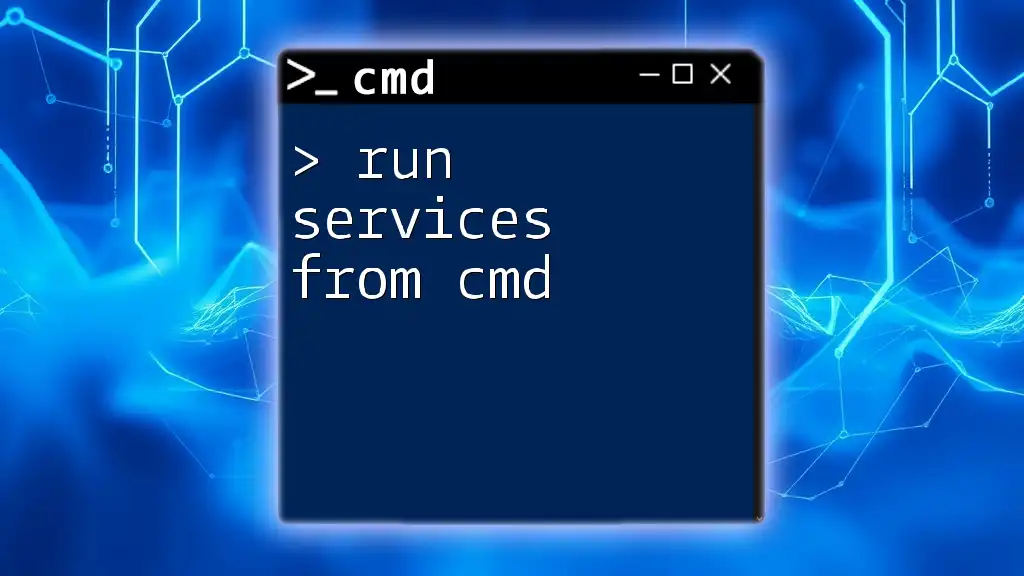
Conclusion
Mastering how to run .exe from CMD opens many doors for Windows users. Whether for software installations, running utilities, or troubleshooting tasks, CMD provides a powerful interface for executing applications quickly and commandingly. By actively practicing these commands, ensuring correct usage, and implementing automation through batch files, you can enhance your productivity and control over your Windows environment.

Additional Resources
For further reading, exploring manuals and guides related to CMD commands and executable file handling will deepen your understanding and skills. Communities and forums dedicated to CMD utilities can serve as valuable support networks for troubleshooting and learning tips from fellow users.
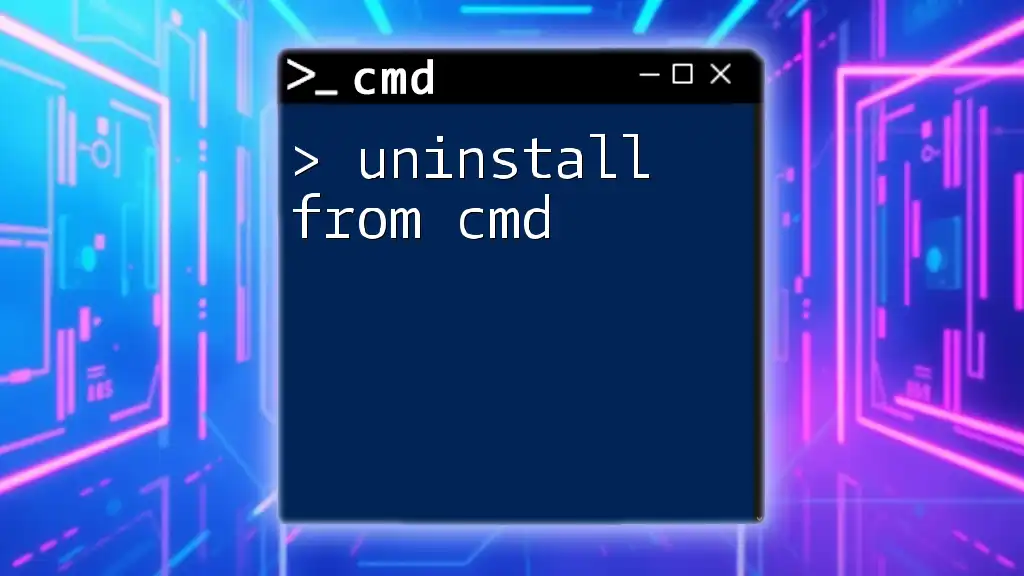
Call-to-Action
We invite you to subscribe for more tips on using CMD effectively and share your experiences or any tips in the comments section below. Engage with the community, and together we can enhance our command-line skills!







